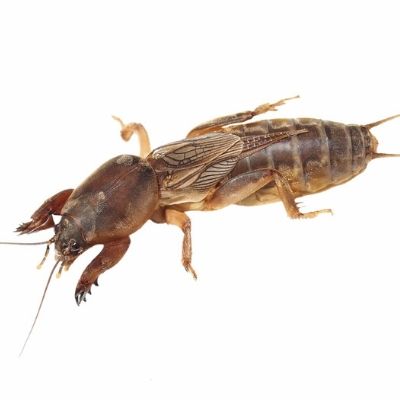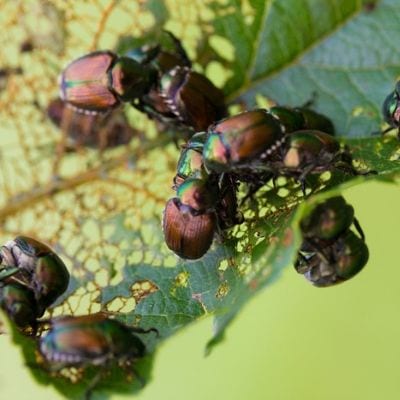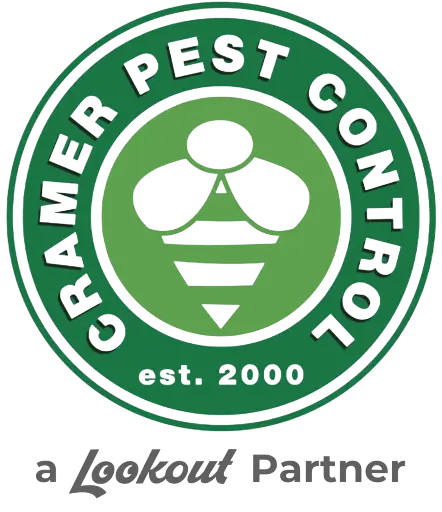Having a green and healthy lawn is the product of hard work and determination. But your lush lawn isn’t just attractive for humans, it also attracts a number of pests that see it as an all-you-can-eat buffet. Knowing the common lawn pests in South Carolina will help you keep your lawn healthy and pest-free this year.
Mole Crickets

These terrifying looking insects can do a great deal of damage to your lawn if you aren’t vigilant and catch them early. Mole crickets are so named because they burrow under sod with their menacing front claws. Their digging disturbs the grass and can cause brown patches to appear. At night, mole crickets emerge to feed on grass and small insects, retreating underground during the day.
To check if mole crickets are present in your yard, try flushing them out with a mixture of two tablespoons of dishwashing detergent and one gallon of water. Apply the mixture over 1-2 square foot area. If there are any mole crickets they will emerge from their holes. If you see more than three mole crickets emerge then it’s time to call for professional help.
Chinch Bugs
A common lawn pest in North and South Carolina is the chinch bug. Chinch bugs live to feast on grasses such as: perennial ryegrass, Kentucky bluegrass, zoysia grass, Bermudagrass, and fescues. Damage from chinch bug activity usually becomes visible between early June and late August, when you’ll start to notice patches of grass turning yellow and brown. As the chinch bug feeds on your grass, it blocks the transport of water and nutrients up the stems. The problem can become exacerbated during drought conditions.
Controlling chinch bugs can be achieved by following an irrigation cycle that increases the presence of the fungus Beauveria, which is lethal to chinch bugs. Beauveria can be purchased and applied by yourself to control chinch bugs and other pests.
Japanese Beetles

Japanese beetles are an invasive species and a very destructive lawn pest. In its larval stage, the beetles feed on grass roots during the spring and in the fall. You might see evidence of this in the form of dead grass and brown patches. When they emerge as adults in the summer they’ll chew on anything green that they come across, including: trees, shrubs, grass, flowers, and more. Given enough time, these ravenous bugs can completely defoliate a tree.
Controlling Japanese beetles starts with early identification in the spring. Just pull up the sod in areas where it’s browning to check for grub presence. The most common way to eliminate Japanese beetles is with pheromone traps. As the beetles emerge from the ground in the summer to look for mates, they will be lured into the trap where they won’t be able to escape.
Sod Webworms
You may have seen the webworm moth when you mow your grass. They are those little white moths that fly short distances before disappearing into the grass again. The moths become active at night when they drop their eggs, up to 200 at a time, across your lawn.
The first instar larvae can skeletize grass blades while the later instarts cut leaf blades and pull them into their burrows. As you can imagine, if enough worms are present, your grass can take a lot of damage, which results in brown patches and bare spots.
Get Professional Treatment From Cramer Pest Control
If you suspect that you have one of these common lawn pests, then call the experts at Cramer Pest Control. We have a full suite of pest control options to treat your South Carolina and North Carolina residential or commercial property.
Call us at (803) 802-7540 (SC) or (704) 763-0204 (NC) today or you can leave a message on our site.
Cramer Pest Control is now a Lookout Partner! Receive the same great Cramer Service, now with Lookout resources and capabilities! Visit Lookout to learn more about our new 18 Pest guarantee and our pest control and prevention services. Sign up today and receive $50 off!
Common Lawn Pests In South Carolina in North Carolina and South Carolina
Protecting North Carolina and South Carolina
